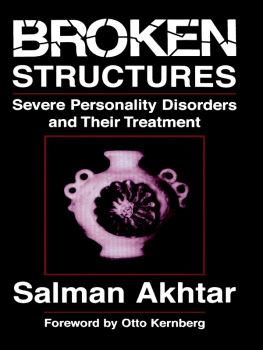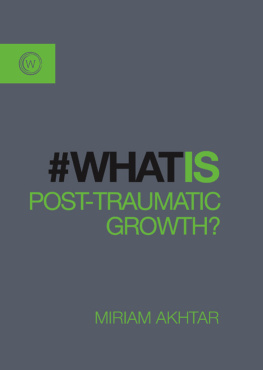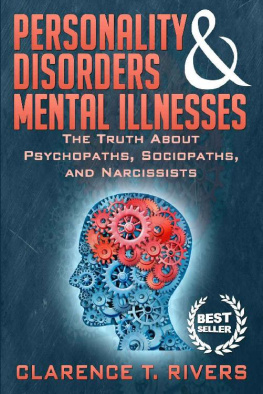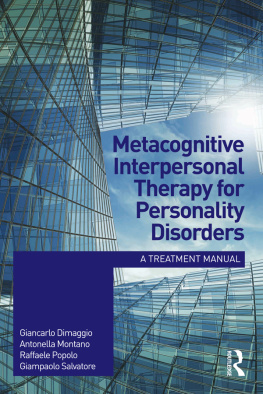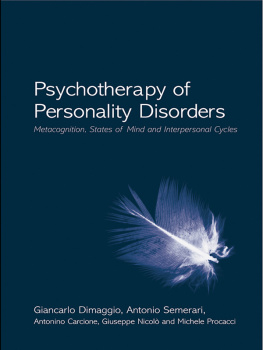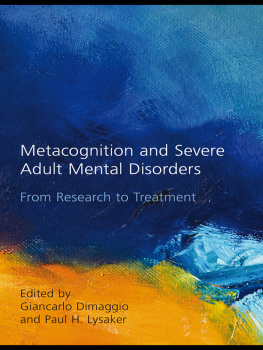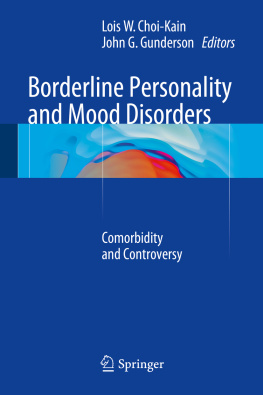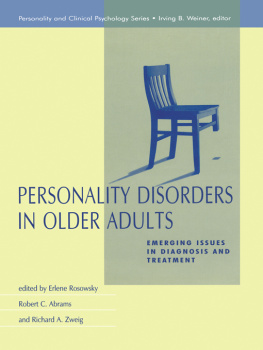Akhtar - Broken structures : severe personality disorders and their treatment
Here you can read online Akhtar - Broken structures : severe personality disorders and their treatment full text of the book (entire story) in english for free. Download pdf and epub, get meaning, cover and reviews about this ebook. year: 2004, publisher: Jason Aronson, genre: Romance novel. Description of the work, (preface) as well as reviews are available. Best literature library LitArk.com created for fans of good reading and offers a wide selection of genres:
Romance novel
Science fiction
Adventure
Detective
Science
History
Home and family
Prose
Art
Politics
Computer
Non-fiction
Religion
Business
Children
Humor
Choose a favorite category and find really read worthwhile books. Enjoy immersion in the world of imagination, feel the emotions of the characters or learn something new for yourself, make an fascinating discovery.
- Book:Broken structures : severe personality disorders and their treatment
- Author:
- Publisher:Jason Aronson
- Genre:
- Year:2004
- Rating:3 / 5
- Favourites:Add to favourites
- Your mark:
- 60
- 1
- 2
- 3
- 4
- 5
Broken structures : severe personality disorders and their treatment: summary, description and annotation
We offer to read an annotation, description, summary or preface (depends on what the author of the book "Broken structures : severe personality disorders and their treatment" wrote himself). If you haven't found the necessary information about the book — write in the comments, we will try to find it.
Akhtar: author's other books
Who wrote Broken structures : severe personality disorders and their treatment? Find out the surname, the name of the author of the book and a list of all author's works by series.
Broken structures : severe personality disorders and their treatment — read online for free the complete book (whole text) full work
Below is the text of the book, divided by pages. System saving the place of the last page read, allows you to conveniently read the book "Broken structures : severe personality disorders and their treatment" online for free, without having to search again every time where you left off. Put a bookmark, and you can go to the page where you finished reading at any time.
Font size:
Interval:
Bookmark:
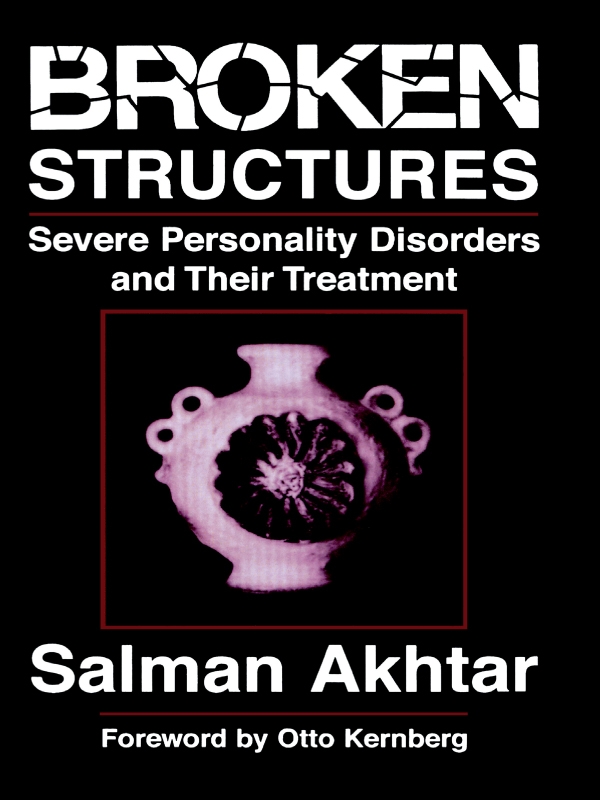
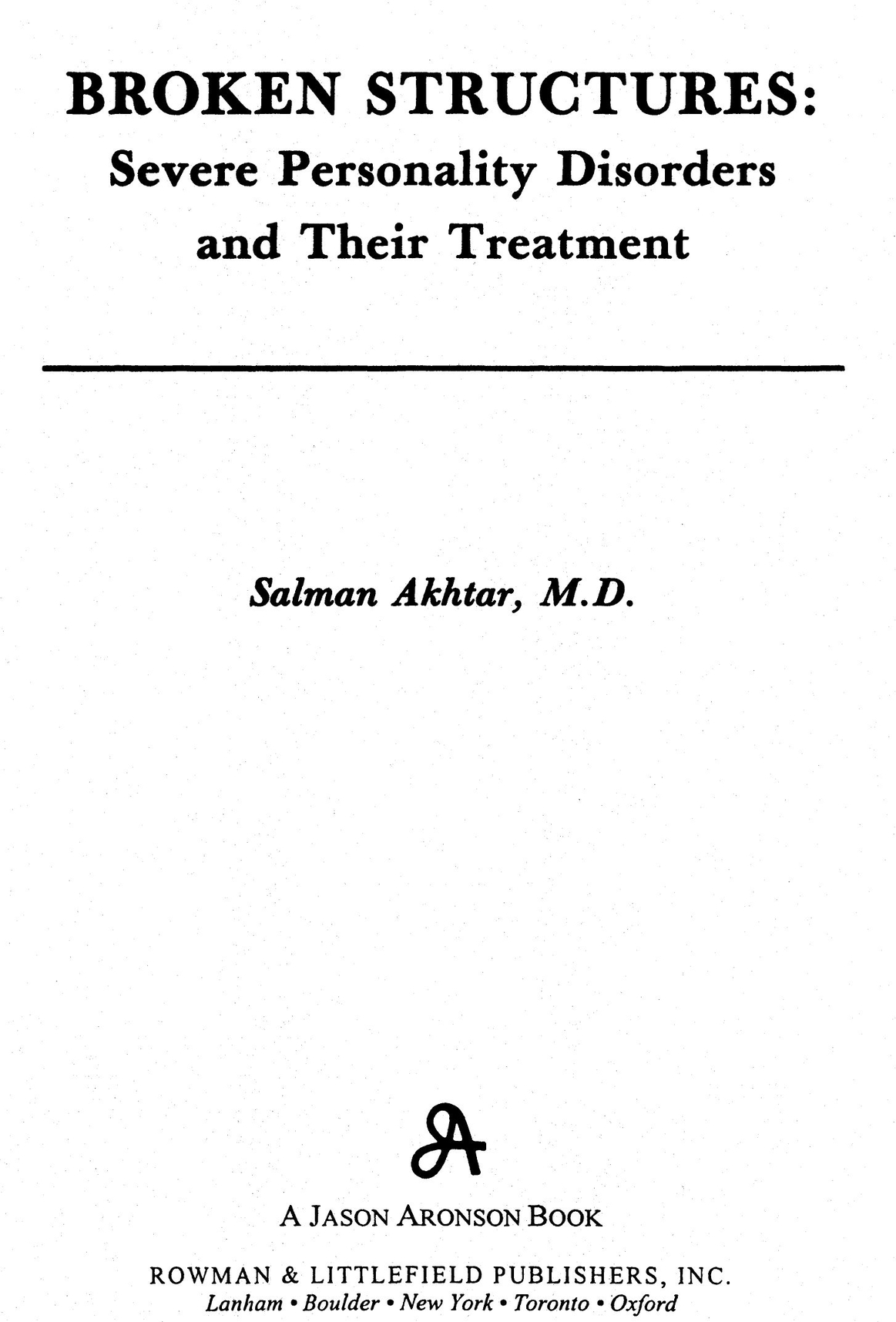
A JASON ARONSON BOOK
ROWMAN & LITTLEFIELD PUBLISHERS, INC.
Published in the United States of America
by Rowman & Littlefield Publishers, Inc.
A wholly owned subsidiary of The Rowman & Littlefield Publishing Group, Inc.
4501 Forbes Boulevard, Suite 200, Lanham, Maryland 20706
www.rowmanlittlefield.com
PO Box 317
Oxford
OX2 9RU, UK
Copyright 1992 by Jason Aronson Inc.
First Rowman & Littlefield Edition 2004
All rights reserved . No part of this publication may be reproduced, stored in a retrieval system, or transmitted in any form or by any means, electronic, mechanical, photocopying, recording, or otherwise, without the prior permission of the publisher.
British Library Cataloguing in Publication Information Available
Library of Congress Cataloging-in-Publication Data
Akhtar, Salman, 1946 July 31-.
Broken structures : severe personality disorders and their treatment / by Salman Akhtar.
p. cm.
Includes bibliographical references and index.
1. Personality disorders. 2. Personality disordersTreatment. I. Title.
[DNLM: 1. Identification (Psychology). 2. Personality Disorderstherapy.
3. Psychoanalytic Therapymethods. WM 190 A315b]
RC554.A24 1992
616.89dc20 91-47121
9781461627685
Printed in the United States of America
 The paper used in this publication meets the minimum requirements of American National Standard for Information SciencesPermanence of Paper for Printed Library Materials, ANSI/NISO Z39.48-1992.
The paper used in this publication meets the minimum requirements of American National Standard for Information SciencesPermanence of Paper for Printed Library Materials, ANSI/NISO Z39.48-1992.
To
my brother
Javed Akhtar
Ex voto
Otto F. Kernberg, M.D.
The most important contributions to the contemporary understanding of the symptoms, psychopathology, diagnosis, and treatment of personality disorders stem from the psychoanalytic exploration in depth of patients with significant character pathology. The dramatic deployment of pathological character traits as transference resistances has constituted the raw material for our understanding of this area of psychopathology. Our developing understanding of the frequency of these disorders in the general population, their relationships to other types of psychopathology, and their etiological factors has come from two broad sources: infant research and descriptive psychiatry. Infant research has, in turn, been stimulated by psychoanalytic investigation.
It might have been expected that these converging approachesparticularly psychoanalysis and descriptive psychiatrywould have cross-fertilized each other; in practice such has not however been the case. This failure has had frustrating, negative effects on the integration of knowledge in the area of character pathology and the personality disorders. As a consequence, important findings in the psychoanalytic investigation of a broad spectrum of patients with personality disorders has not been adequately incorporated into the descriptive phenomenology and the psychiatric classification of these disorders. At the same time, important findings derived from empirical research on severe personality disorders and from epidemiological studies of the pathology of early development have not found their way into the mainstream of psychoanalytic thinking.
In this elegant volume, Dr. Akhtar has sought to bridge this gap and to integrate, at a sophisticated level of contemporary knowledge, the findings from descriptive psychiatry and from the psychoanalytic study of severe personality disorders. His is not an eclectic combination of disparate findings and thinking; to the contrary, Dr. Akhtar critically analyzes the developments in both psychodynamic and descriptive psychiatry, and establishes a historical frame of reference for the approaches in both fields, one that separates out the essential from the marginal and even trivial.
Dr. Akhtar has cogently selected the clinically most prevalent severe personality disorders and reviewed the significant contributions from descriptive psychiatry and psychoanalysis, including a broad spectrum of continental European psychiatric thinking as well as the more familiar English and American literature in this field. At a time when the study in depth of descriptive psychiatry has tended to be neglected in favor of listing the principal symptomatic constellations found in clinical practice, Dr. Akhtar brings back the rich contributions to descriptive phenomenology of classical psychiatry, providing the clinician with sophisticated, subtly discriminating tools. Dr. Akhtar also reviews critically the psychoanalytic contributions to the understanding of the major personality disorders from both structural and dynamic perspectives. Bringing together the findings from contemporary ego psychology, object relations theory, self psychology, and interpersonal psychoanalysis, he replicates here the same broad, international perspective that characterizes his review of descriptive psychiatry.
In condensing and integrating these areas and approaches for each of the major personality disorders, Dr. Akhtar, with a remarkable clarity and economy of style, provides an enormous amount of information without ever overwhelming the reader. The result is a comprehensive update on the principal personality disorders, ongoing controversial issues, research in progress, and a critical analysis of DSM-III-R. By adding a careful differential diagnosis, he gives the clinician valuable instruments with which to assess the patients psychopathology, prognosis, and treatment indications.
A significant, original contribution is Dr. Akhtars presentation of a comprehensive frame that permits a comparison of these personality disorders from six viewpoints: the patients self concept, his interpersonal relations, his social adaptation, his functioning in the area of love and sexuality, his ethics and ideals, and his cognitive style. This approach clearly transcends counting descriptive traits in order to arrive at a diagnostic formulation.
At the same time, Dr. Akhtar leaves open the challenging, still unresolved issue of a satisfactory classification of personality disorders that would integrate both categorical and dimensional criteria. He points to the importance of considering the ways in which some of the personality disorders differ in degree of severity rather than structurally, but he also stresses the categorical nature of several personality disorders. A fully satisfactory classification of personality disorders will require a clear understanding of the mechanisms of their development and crystallization, of the interaction of genetic, neurophysiological, early developmental, familial, and, above all, psychodynamic and psychostructural features that should permit such an integration. Dr. Akhtars book gives the reader a comprehensive overview of the evidence currently available in all these fields, without attempting premature closure.
Dr. Akhtar also addresses the methodology of clinical evaluation of patients with personality disorders. He conveys valuable advice to the diagnostician, illustrated with lively clinical examples, and then proceeds to spell out his own approach to psychoanalytic psychotherapy. The reader might or might not agree with Dr. Akhtars approach to the psychotherapy of personality disorders. The richness, cogency, and fairness of his review of alternative psychotherapeutic approaches, however, always permit the reader to reach his own conclusion.
Font size:
Interval:
Bookmark:
Similar books «Broken structures : severe personality disorders and their treatment»
Look at similar books to Broken structures : severe personality disorders and their treatment. We have selected literature similar in name and meaning in the hope of providing readers with more options to find new, interesting, not yet read works.
Discussion, reviews of the book Broken structures : severe personality disorders and their treatment and just readers' own opinions. Leave your comments, write what you think about the work, its meaning or the main characters. Specify what exactly you liked and what you didn't like, and why you think so.

